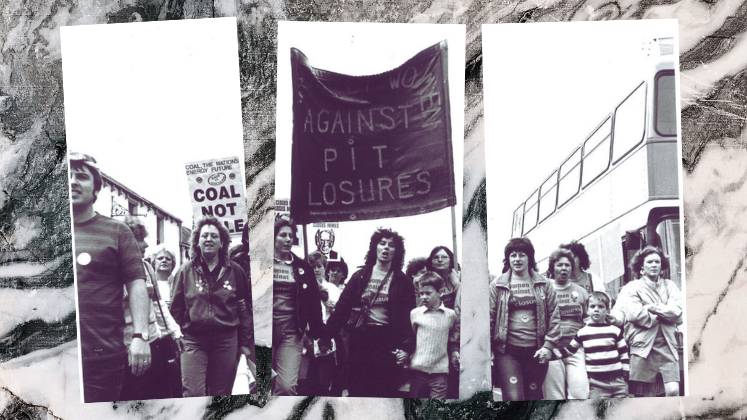 Knowledge exchange and impact activities often have to negotiate, incorporate and synthesise different kinds of expertise. Mona Sloane looks at how the Configuring Light Roundtables have sought to bring together perspectives on inequalities in social housing lighting by encouraging productive dialogue between those with abstract and practical expertise. This kind of collaboration offers real potential for re-defining universities as knowledge spaces in a creative way. In this model of impact, the boundaries between academic and practitioner blur and dialogue is prioritised over dissemination.
Knowledge exchange and impact activities often have to negotiate, incorporate and synthesise different kinds of expertise. Mona Sloane looks at how the Configuring Light Roundtables have sought to bring together perspectives on inequalities in social housing lighting by encouraging productive dialogue between those with abstract and practical expertise. This kind of collaboration offers real potential for re-defining universities as knowledge spaces in a creative way. In this model of impact, the boundaries between academic and practitioner blur and dialogue is prioritised over dissemination.
As academics, much of our commonsensical understanding of knowledge exchange and impact activities rests upon the assumption that we need the research, the expert knowledge (and the publications) first to then go out into the world to ‘impact’ upon practitioners, policy makers and the public. In this interpretation, there is not much room for collaborative work and the co-development of knowledge. It is a top-down approach which privileges abstract knowledge over practical expertise.
In the ever-changing landscape of 21st higher education and academic research, however, universities can and must act as forums to bring both abstract and practical expertise together. We found this merging of expertise was particularly evident in the case of social questions of public lighting and in relation to raising inequalities in public lighting as an increasingly pressing issue in UK’s social housing sector.
Over the past eight months, Configuring Light has run a series of roundtable meetings between LSE academics and high-profile experts and stakeholders in the fields of design, planning and policy making to develop strategies for tackling inequalities in public lighting. This expert working group has met on three occasions in order to develop a cross-disciplinary and actionable agenda to facilitate a more careful consideration of lighting in social housing planning and development. Each meeting featured working group members as speakers and focused on a London-based case study – the Whitecross Estate, the Thamesmead Estate, the St John’s Way development – to evaluate how social inequalities are mirrored in different types of social housing lighting.
The idea of social inequalities in lighting is a fairly new one: Configuring Light’s research into public lighting over the past years has shown that lighting can reproduce or even magnify social inequalities. For example, the over-illumination of social housing estates, to allow for better CCTV surveillance and the prevention of anti-social behaviour and crime, mark some spaces out as less valuable and even threatening or risky, deterring people from using and enjoying these spaces. In contrast, in more affluent neighbourhoods or expensive designer developments, light is used as a design tool to create an aesthetically pleasurable nightscape which appears valuable, safer and more inviting.
This aspect of how public lighting is deployed has, ironically, remained invisible in most of the current debates about urban inequalities, housing and public space design, but also in the discourse on the potentials of new lighting technologies for cities. But at the same time, housing providers, the police, public space designers have all registered the same issue: the stark contrasts in which different urban spaces are lit leads to preventable high energy and maintenance costs and a sense of segregation between urban areas.
These lighting inequalities sit within a larger context of escalating socio-spatial inequalities and deregulation, particularly in London. London’s housing supply falls way behind its demand and is characterised by both growing austerity and large-scale gentrification, a polarisation that fundamentally challenges the idea of social housing.
This comes at a time of significant deregulation of design quality assurance in the affordable housing sector: the changing economic and regulatory environment has diverted responsibility to under-resourced local authorities or to developers and housing providers. Even though the performance of social housing providers continues to be monitored, this means that design quality standards for social housing, such as sustainability standards (e.g. Code for Sustainable Homes) and Secured by Design standards, can no longer be required by governmental agencies, but only by local authorities. This puts increasing pressure on local budgets that are already strained. It also changes the role of housing providers themselves: they need to develop intelligent and resilient knowledge-sharing and design practices without external enforcement.
 Image copyright: Catarina Heeckt
Image copyright: Catarina Heeckt
And this is where KEI work can unfold its full potential: in the absence of regulation and publicly funded knowledge-sharing among light practitioners, the Configuring Light Roundtables project allowed for the LSE to provide a space for critically evaluating light inequalities, driven by social research as opposed to corporate interest. In order to develop applicable and robust strategies to address the issue of light inequalities, it was key to understand the roundtables in their most literal sense, namely as a platform to encourage a productive dialogue between abstract and practical expertise.
In this scenario, the academic appears on scene not as beholder of the ultimate truth, but as one expert among many, and as facilitator. Configuring Light’s research was used to ask the right questions to the relevant people, and not to disguise abstract knowledge as best practice. This strategy of co-producing knowledge as opposed to ‘impacting abstract knowledge upon practitioners’ proved to be very successful. The members of the Configuring Light Roundtables group have given testimony as to how these discussions have changed the way in which they conceptualise and operationalise light in their own work, seeking to diminish the negative effects of unequally ‘good’ public lighting and Configuring Light is continuing collaboration with some of the institutions involved. Furthermore, the experts now collaborate with each other, beyond Configuring Light’s steering, to the end of implementing lessons learned from the roundtables meetings.
So what we have learned from this project is that, ultimately, ‘impact’ is something that is much more about dialogue than about dissemination. We need to take seriously the fact that we will increasingly encounter very knowledgeable ‘researchers’ in the practical world and very ‘impact’-oriented academics in higher education.
In other words, moving forward, the boundaries between academic and practical knowledge will blur more and more. And while this will focus universities to re-evaluate their own mechanisms of quality assurance, it offers real potential for re-defining universities as knowledge spaces in a creative way. The Configuring Light Roundtables were an exciting exercise in this regard and will hopefully lead to more projects and collaborations of this kind.
This blog post is based on joint research and project work between Mona Sloane, Don Slater and Joanne Entwistle as part of the Configuring Light/Staging the Social Research programme of LSE Sociology. Configuring Light/Staging the Social is an interdisciplinary research programme based in the Sociology Department at the London School of Economics and Political Science (LSE). It explores the role lighting plays in our everyday life to help build a better social knowledge basis for lighting design interventions. It was founded in 2012 by the sociologists Dr Joanne Entwistle (King’s College London), Dr Don Slater and Mona Sloane (both LSE) and is supported by the LSE and the Economic and Social Research Council (ESRC).
Note: This article gives the views of the author, and not the position of the LSE Impact blog, nor of the London School of Economics. Please review our Comments Policy if you have any concerns on posting a comment below.
Mona Sloane is co-founder of Configuring Light/Staging the Social and PhD candidate at the LSE Sociology Department where she holds an LSE scholarship and works and publishes on the sociology of design and urban planning, material culture and aesthetics and economic sociology.








Absolutely! I would love to share my science on the subject of theoretical macroeconomics. Write to me for an e-copy of my work, which is (at last) a better science than of the past. chesterdh@hormail.com
This blog is a welcome contribution to the ongoing call for greater collaboration between academics and practitioners. Sadly though it remains more of an aspiration than a reality. In my small experience, charities seem far better at this than the public sector. Civil servants too often work in silos and given the increasing budgetary pressure faced by government, it’s nigh time they used resources more efficiently, through cross collaboration.